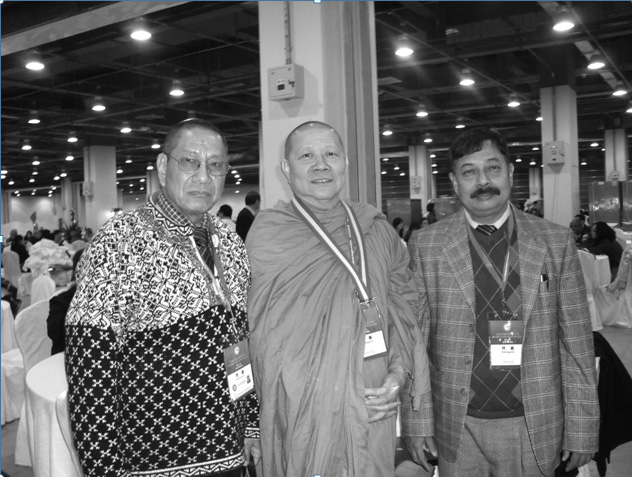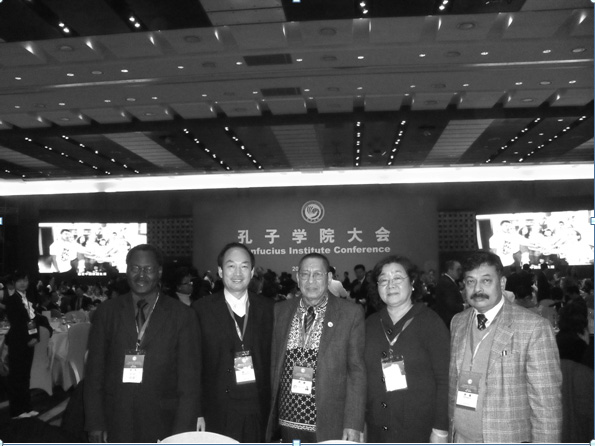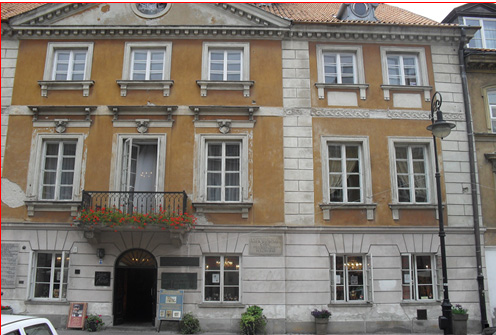– रामचन्द्र पौडेल
आस्तिक दशर्नले मूलपुरुष स्थायी मान्छ । किनभने यसको उत्पत्ति छैन र विनास पनि छैन । यो सनातन प्रकृतिभन्दा पृथक र सर्वव्यापी पनि छ । विस्तृत यो संसारमा बीजरूप पुरूष जीवात्मा बन्छ । अनन्त अन्तस्करणका सम्बन्धले अनन्त बन्छ, । जडत्व यद्वा सक्रिय त्रिगुणात्मक प्रकृति र पुरुषका रूपमा परमात्मा तत्व बन्दा शुद्ध चेतन निष्क्रिय भएर ज्ञान स्वरुपमा परिणत हुन्छ । सत्व, रज, तम मूल प्रकृतिका तीन गुण हुन्छन् जो कुनै समय विशेषमा साम्यावस्थामा रहेका हुन्छन् र कुनै बेला विषम अवस्थामा । जब तीनै गुणका गुण साम्यवस्थामा हुन्छन् त्यो प्रलयावस्थामा कहलिन्छ र मूल प्रकृति र पुरुषबाहेक यस बेला अरु केही पनि हुँदैन । फेरि प्रकृतिमा संयोग हुनथाल्दा तिनै गुणमा न्यूनाधिकता हुन थाल्छ र प्रथमत: सत्वगुणको प्रधानताबाट महतत्व अथवा बुद्धि तत्वको उत्पत्ति हुन्छ । बुद्धितत्वमा रजोगुणको प्रबलताले अहंकारको उत्पत्ति गराउँछ र अहंकारमा जब तमो गुणको प्रावल्य सुरु हुन्छ अनि शब्द, स्पर्श,रूप, रस र गन्ध गरी पाँचवटा सूक्ष्म तन्मात्रा उत्पत्ति हुन्छन् । तमो गुणको अत्यधिक वृद्धि हुन्छ अनि यिनै सूक्ष्म तन्मात्राबाट पञ्च स्थूलभूत अर्थात् आकाश, वायु, अग्नि, जल र पृथ्वीको उत्पत्ति हुन्छ । यी पञ्चमहाभूत र तीनका न्यूनाधिक सहकार्यबाट थरिथरिका स्थावर, जङ्गम सृष्टि हुन थाल्छन् किनकि प्रकृतिका सत्व, रज र तमोगुण भिन्नभिन्न स्वभावका भए पनि यिनीहरू सधैँ एकसाथ रहन्छन् र यिनीहरूकै न्यूनाधिक संयोगबाट नै संसारको सृष्टि हुन्छ । जसरी तेल, बत्ती र दीयोको तीन कुरा पृथक् पृथक् छन्, यिनैको संयोजबाट बलेको दीयोको ज्योतिले अन्धकारलाई हटाएर सृष्टिलाई उज्यालो गराउँछ, त्यसै गरी यी तीन गुणले पनि सृष्टि गर्छन् । विश्वका सबै मानिस र जीवहरू पृथकपृथक देखिनु उनै परमात्माको देन हो भनेर विद्वान्हरूले स्वीकार गर्दै आएका छन् । श्रीमद्भागवतमा भगवान्ले आफ्नो योगमाया अर्थात् प्रकृतिरूपी उपादान कारणका सहायताले यस संसारको निर्माण गरेको विसद् वर्णन छ । संसारको निर्माणको पहिलो अवस्थामा ब्रह्म एक्लै थियो, त्यसलाई देख्ने कुनै जीव विशेष थिएन, त्यति बेला उसले हेर्न खोज्यो तर उसले केही पनि देखेन अनि ईश्वरले ‘‘एकोऽहं बहुस्याम’ अर्थात् एक छु अनेक हुन्छु भन्ने भावनाबाट प्रेरित भएर त्रिगुणामयी मायाको सृष्टिा ग¥यो । अनि ईश्वरले आफ्नो अंशलाई पुरुषमा परिणत गराएर मायामा आफ्नो रेतस् (विर्य) लाई प्रवेश गरी चैतन्यलाई उत्पन्न गरायो । त्यस चैतन्यबाट सत्व रज र तम उत्पन्न भए । सात्विक अहंकारबाट मनेन्द्रियको अधिष्ठाता देवता उत्पन्न भए । राजस अहंकारबाट दशेन्द्रिय (वाक्—पाणि—पाद—पायु—उपस्थ) पाँच कर्मेन्द्रिय, चक्षु—रसना—घ्राण—त्वक्—श्रोत्र) पाँच ज्ञानेन्द्रिय उत्पन्न भए । तामसबाट पञ्चमहाभूत (पृथ्वी—जल—तेज—वायु—आकाश) उत्पन्न भए ।
शतपथ ब्राह्मण तथा पुराणहरूमा उल्लेखभए अनुसार जलामय संसारबाट एउटा ब्रह्माण्डको उत्पत्ति भयो, त्यस ब्रह्माण्डबाट चतुर्मुखी ब्रह्मा उत्पन्न भए । उनले धेरै वर्षसम्म भगवान्को तपस्या गरे । ब्रह्माका तपस्याबाट खुशी भएका परमपिता ईश्वरले प्रजासृष्टिका लागि ब्रह्मालाई आज्ञा दिए । फलस्वरुप ब्रह्माको दाहिने अंगबाट स्वयम्भू नाम गरेका पुरुष र बाया अंगबाट शतरुपा नाम गरेकी स्त्री पैदा भइन् । यी दुईका मिथुनी धर्मबाट सारा जीवको उत्पत्ति भएको भनाइ पाइन्छ । यो पूर्वीय मान्यता हो । यस्ता कुराहरू अधिकांश पुराणहरूमा पाइन्छन् ।
नासदीय सूक्तका अनुसार सृष्टिपूर्व संसार भनेको केही थिएन । सत्य—असत्य, चौध भुवन, केही पनि थिएनन् । जन्म–मृत्यृ र रात–दिन भन्ने पनि थिएन, तर एउटा निराकार परब्रह्म वायुविना पनि आफ्नो इच्छा अनुसार शेष थियो र त्यसबाहेक यस संसारमा अरू केही पनि थिएन । चारैतिर अज्ञानको अन्धकार थियो र शून्य थियो । यसै बखत त्यही परब्रह्म (आत्मतत्व) आफ्नो संकल्पशक्तिले प्रकटित भयो । त्यसपछि सृष्टि गर्ने कामना (ईच्छा) जाग्यो र मनको उत्पत्ति भयो जसलाई सिर्जना र संसारको आदिबीज मानिन्छ । त्रिकालदर्शी मुनिहरूले ब्रह्मको यो सबै सृष्टिविकारलाई असत्का रूपमा लिएका छन् । अब यहाँ प्रश्न उठ्छ—सृष्टिको त्यो रश्मि (किरण) कसरी विस्तारित भयो ? एकै पटक चर—अचरको सृष्टि भयो वा क्रमागत रूपमा भयो भन्ने प्रश्न उठ्नु स्वभाविकै हो । वास्तवमा सृष्टि बीजरूप भोक्ता (जीव) र भोग्य (सांसारिक पदार्थ) को दुई रूपमा सृष्टि भयो । यसरी कर्ता र कर्मको आविर्भाव भएको देखियो ।यथार्थमा सृष्टिविज्ञान दुर्बोध्य र दुरूह छ। यसको रहस्य कसैले पत्ता लगाउन सकेको छैन। यसबारे देवताहरूलाई थाहा छैन, किन भने उनीहहरू भौतिक पदार्थको सृष्टिभन्दा धेरैपछि आविर्भाव भएका हुन् । यहाँनेर के भन्नु युक्तिसङ्गत् हुन्छ भने यो सृष्टिचक्र जहाँबाट सञ्चालन भए पनि यसमा निरन्तरता रहेको हुन्छ। वास्तवमा यो सृष्टि उसैलाई ज्ञात हुन्छ जो संसारको नियामक र सर्वत्र व्याप्त छ।
यसरी सृष्टिको रहस्य, सृष्टिपूर्वको शून्य स्थिति तथा परब्रह्मको सर्वव्यापकता जस्ता पक्षहरूलाई चर्चामा ल्याउने नासदीय सूक्तलाई वैचारिक उचाइको चिन्तन भन्न सकिन्छ । यसमा जन्मपूर्व र मृत्युपश्चात्को रहस्यलाई समेत जान्न चाहने उत्कण्ठा छ । अन्ततो गत्वा सबै रहस्यलाई परब्रह्ममा पु¥याएर चिन्तनलाई निराकार तथा निर्गुण तत्वमा केन्द्रित बनाइएको छ । संसारभन्दा भिन्न परम तत्व (परब्रह्म) को परिकल्पना गरेर संसार नाशवान् तथा परब्रह्म नित्य छ भन्ने जुन दृष्टिकोण यहाँ पाइन्छ । त्यो आर्यहरूको आस्थागत भावनाको परिणाम हो । नाश हुने जीवनका लागि ‘तेरो—मेरो’ भन्ने विचार राख्न हुँदैन भन्ने वेदान्तमुखी शिक्षा—उपदेशलाई समेत् नासदीय सूक्तले स्पष्ट पारेको छ । त्यसकारण नासदीय सूक्त वैदिक साहित्यमा वैचारिक उचाई भएको सूक्त हो । यस सन्दर्भमा ‘नासदीय सूक्त’का केही उदाहरण तल दिइएका छन् ।
नासदासिन्नो सदासीत् तदानीं नासीत् रजो नो व्योमा परो यत् ।
किमवरीव: कुह कस्य शर्मन् अम्भ: किमासीतद् गहनं गभीरम् ।।
अर्थात् सृष्टिपूर्व महाप्रलयको समयमा न सत् थियो न त असत् नै । लोक र आकाशहरू पनि थिएनन् । परम पद भन्ने समेत थिएन । यो जगत्को आवरण पनि देखिएन । गहन जलप्रवाह पनि थियो कि थिएन सृष्टिपूर्व केही थिएन, अदृश्य रूपमा केवल परब्रह्म थियो । उसको इच्छा मात्रले विन्दू विस्फोट भयो र यस विस्फोटले सृजना आरम्भ ग¥यो । यो भनाई र ४३५ करोड वर्षका महानिशा पछि ग्याँसको पिण्डीकरण र पिण्ड विस्फोटपछि बनेका अनन्त पिण्डमा हुने रसायनिक प्र्रतिक्रियाबाट यो सृष्टि भएको हो भन्ने सङ्केतहरू पनि मिल्दाजुल्दा नै देखिन्छन् । यसरी ऋग्वेदको नासदीय सूक्तले पनि सृष्टिकोबारे चर्चा गरेको पाइन्छ ।


